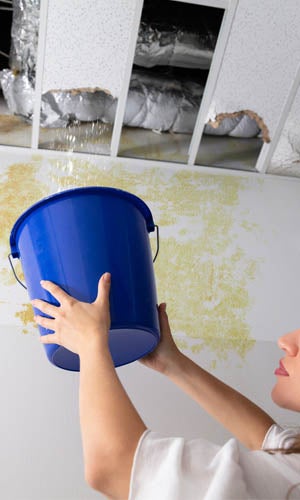Discovering Sneaky Water Line Leaks: Six Proven Techniques
Discovering Sneaky Water Line Leaks: Six Proven Techniques
Blog Article
What're your ideas about Finding hidden leaks?

Early detection of leaking water lines can mitigate a potential calamity. Some tiny water leakages may not be noticeable.
1. Check Out the Water Meter
Every house has a water meter. Examining it is a surefire manner in which assists you uncover leakages. For starters, turn off all the water resources. Ensure nobody will flush, utilize the faucet, shower, run the washing device or dish washer. From there, go to the meter and watch if it will alter. Considering that no person is utilizing it, there ought to be no movements. If it relocates, that indicates a fast-moving leak. If you identify no adjustments, wait an hour or two and also examine back once more. This means you might have a slow leak that could even be below ground.
2. Check Water Intake
Assess your water bills and track your water intake. As the one paying it, you should see if there are any type of disparities. If you find sudden changes, despite your usage coinciding, it implies that you have leaks in your plumbing system. Bear in mind, your water bill should fall under the same array each month. An unexpected spike in your bill indicates a fast-moving leak.
A consistent increase every month, also with the same behaviors, reveals you have a slow leakage that's also gradually intensifying. Call a plumber to thoroughly inspect your residential or commercial property, specifically if you really feel a cozy area on your flooring with piping beneath.
3. Do a Food Coloring Test
When it comes to water usage, 30% comes from toilets. If the color somehow infiltrates your bowl during that time without flushing, there's a leakage between the storage tank and bowl.
4. Asses Outside Lines
Don't forget to examine your exterior water lines also. Should water leak out of the link, you have a loose rubber gasket. One tiny leakage can lose loads of water as well as surge your water expense.
5. Examine and Analyze the Scenario
House owners must make it a behavior to examine under the sink counters and also also inside cupboards for any bad odor or mold development. These two red flags show a leak so timely interest is needed. Doing routine inspections, even bi-annually, can conserve you from a significant problem.
If you recognize your home is already old, maintain a careful eye on your heaters, pipes, pipes etc. Check for discolorations and also damaging as most pipes and devices have a life expectancy. They will also naturally weaken because of wear and tear. Do not wait for it to intensify if you suspect dripping water lines in your plumbing system. Call a professional plumber right now so you don't end up with a horrible mess in your home.
Early discovery of leaking water lines can minimize a possible disaster. Some tiny water leakages may not be noticeable. Examining it is a surefire way that aids you uncover leakages. One small leakage can squander loads of water and also spike your water bill.
If you presume dripping water lines in your plumbing system, do not wait for it to rise.
WARNING SIGNS OF WATER LEAKAGE BEHIND THE WALL
PERSISTENT MUSTY ODORS
As water slowly drips from a leaky pipe inside the wall, flooring and sheetrock stay damp and develop an odor similar to wet cardboard. It generates a musty smell that can help you find hidden leaks.
MOLD IN UNUSUAL AREAS
Mold usually grows in wet areas like kitchens, baths and laundry rooms. If you spot the stuff on walls or baseboards in other rooms of the house, it’s a good indicator of undetected water leaks.
STAINS THAT GROW
When mold thrives around a leaky pipe, it sometimes takes hold on the inside surface of the affected wall. A growing stain on otherwise clean sheetrock is often your sign of a hidden plumbing problem.
PEELING OR BUBBLING WALLPAPER / PAINT
This clue is easy to miss in rooms that don’t get much use. When you see wallpaper separating along seams or paint bubbling or flaking off the wall, blame sheetrock that stays wet because of an undetected leak.
BUCKLED CEILINGS AND STAINED FLOORS
If ceilings or floors in bathrooms, kitchens or laundry areas develop structural problems, don’t rule out constant damp inside the walls. Wet sheetrock can affect adjacent framing, flooring and ceilings.
https://www.servicemasterbyzaba.com/blog/how-to-detect-water-leakage-in-walls/

We had been shown that article about Leaking water lines through an associate on our other web blog. If you please take a moment to promote this page if you appreciated it. Bless you for your time. Come back soon.
Go Company Report this page